Body Cavity Diagram ClipArt Best

Body Cavity Diagram Human body anatomy, Human anatomy, Human anatomy
Figure 33.6.1 33.6. 1: Body planes: Shown are the planes of a quadruped goat and a bipedal human. The midsagittal plane divides the body exactly in half into right and left portions. The frontal plane divides the front and back, while the transverse plane divides the body into upper and lower portions. Vertebrate animals have a number of.

Body Cavities Chest Cavity Anatomy and Body Cavities Anatomy
Schematic diagrams of the bodies of animals with coeloms, with pseudocoeloms, or without body cavities. functions of body cavities. Humans have four body cavities: (1) the dorsal body cavity that encloses the brain and spinal cord; (2) the thoracic cavity that encloses the heart and lungs; (3) the abdominal cavity that encloses most of the.
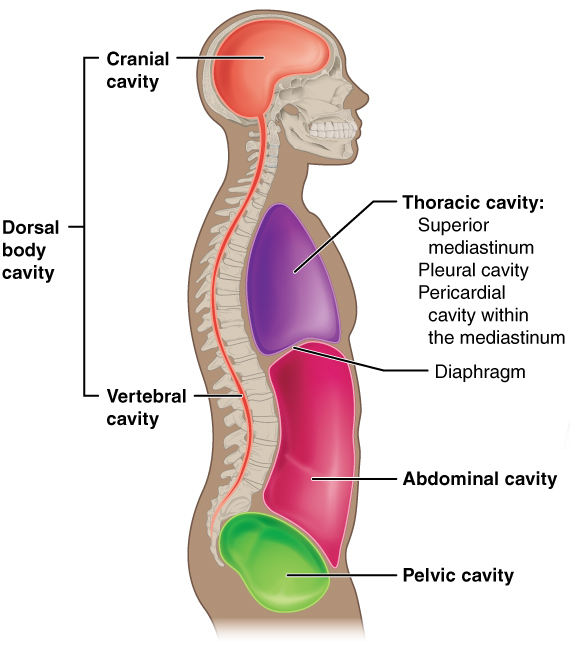
Dorsal Cavity Definition, Organs and Function Biology Dictionary
The thoracic cavity is the anterior ventral body cavity found within the rib cage in the torso. It houses the primary organs of the cardiovascular and respiratory systems, such as the heart and lungs, but also includes organs from other systems, such as the esophagus and the thymus gland. The thoracic cavity is lined by two types of mesothelium.
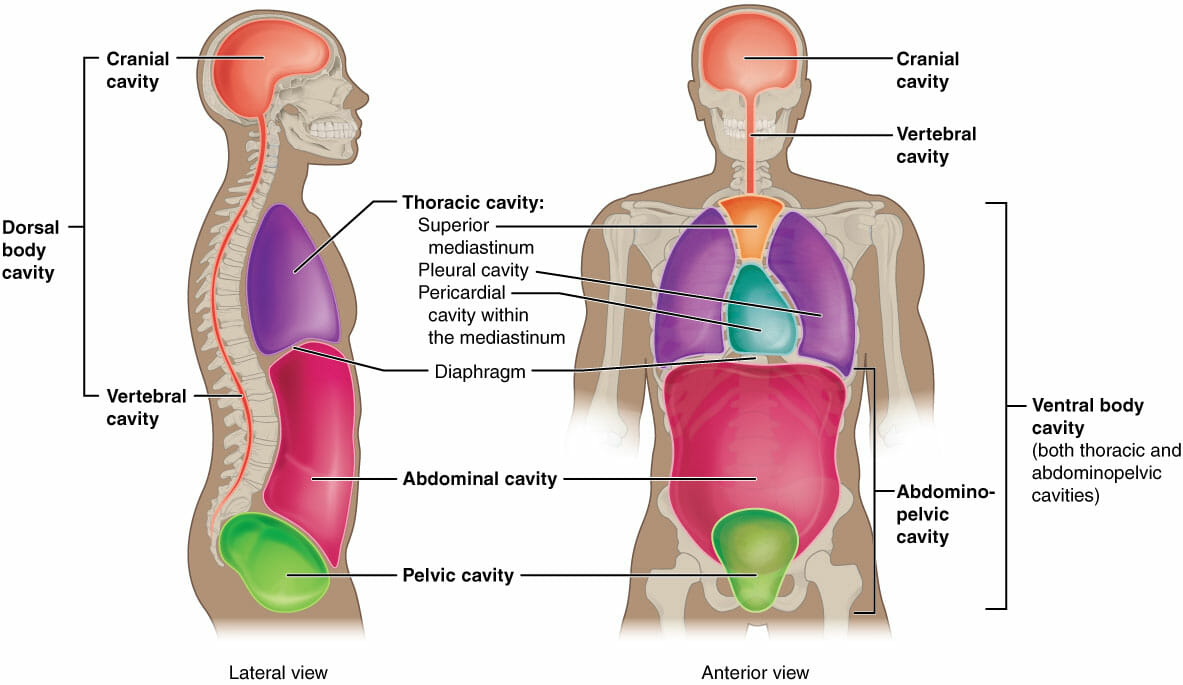
Body Cavities and Organs Biology Dictionary
A body cavity is any space or compartment, or potential space, in an animal body. Cavities accommodate organs and other structures; cavities as potential spaces contain fluid. The two largest human body cavities are the ventral body cavity, and the dorsal body cavity. In the dorsal body cavity the brain and spinal cord are located.

Dorsal body cavity Wikipedia
A. body cavity. is a fluid-filled space inside the body that holds and protects internal organs. Human body cavities are separated by membranes and other structures. The two largest human body cavities are the ventral cavity and dorsal cavity. These two body cavities are subdivided into smaller body cavities.
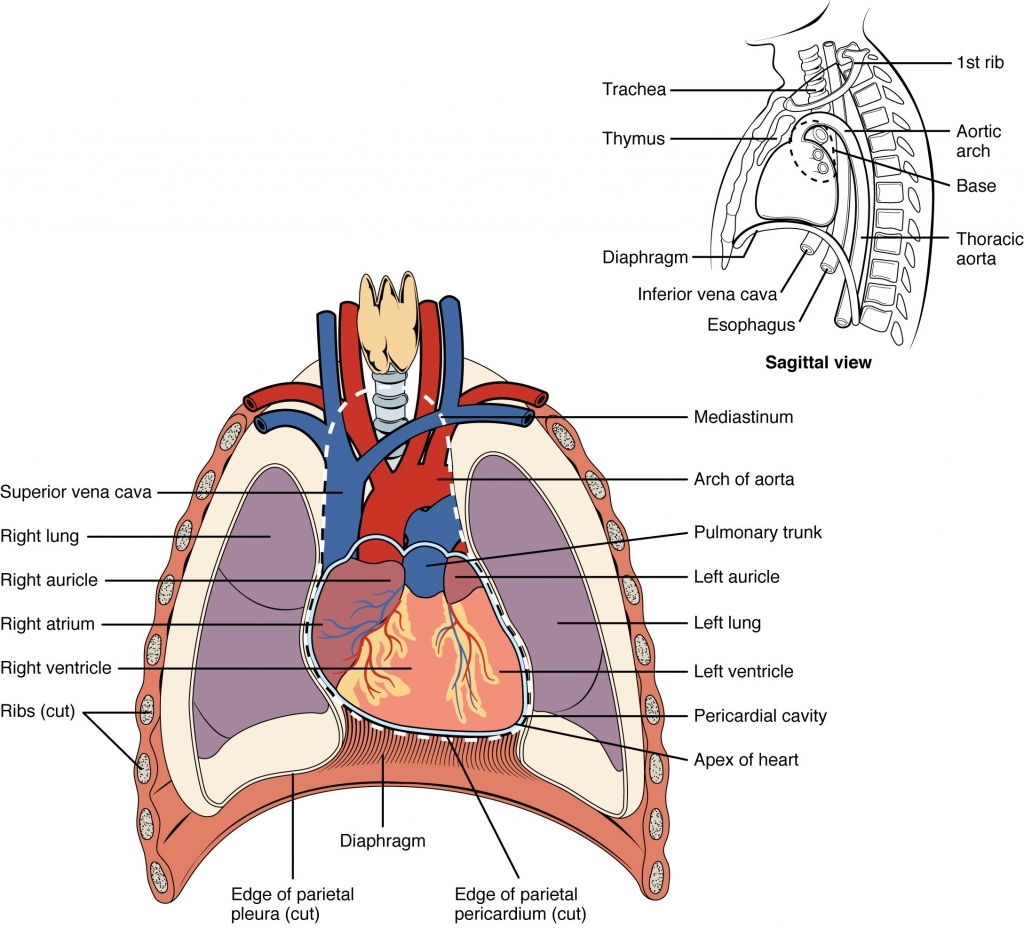
Body Cavity Diagram ClipArt Best
Tissue Membranes. The two broad categories of tissue membranes in the body are (1) connective tissue membranes, which include synovial membranes, and (2) epithelial membranes, which include mucous membranes, serous membranes, and the cutaneous membrane—in other words, the skin. From Betts, et al., 2013. Licensed under CC BY 4.0.
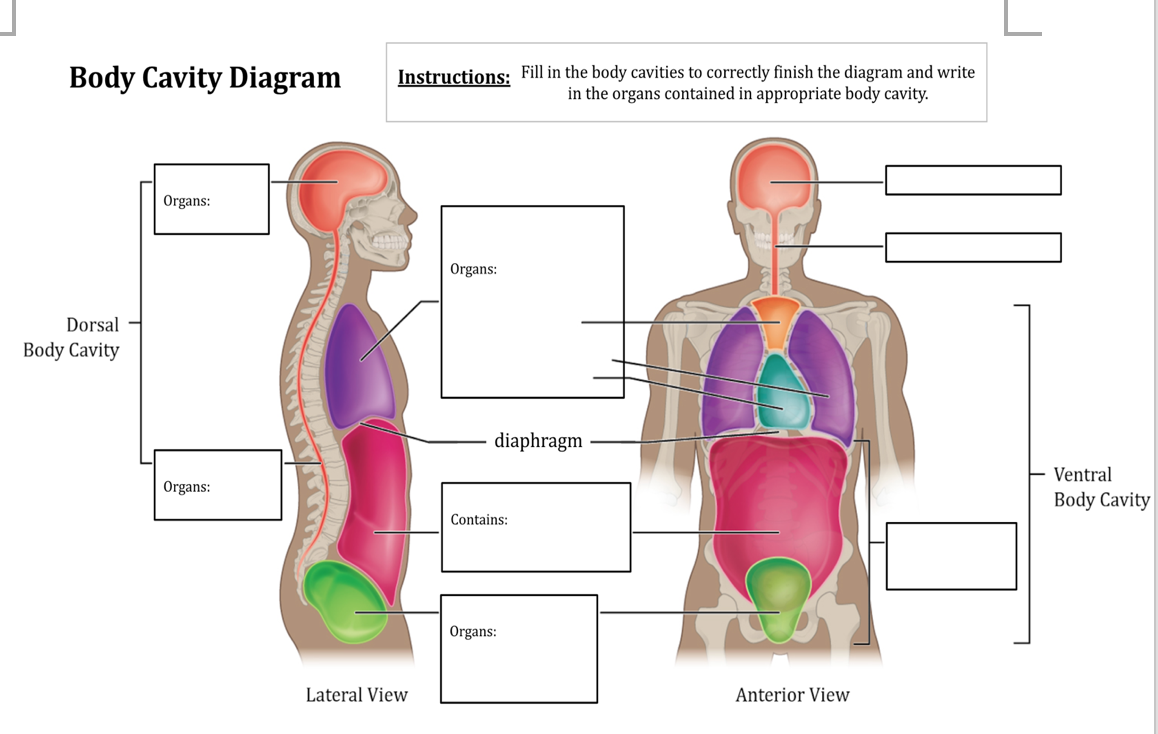
Solved Body Cavity Diagram Instructions Fill in the body
Information. The major cavities of the human body are the spaces left over when internal organs are removed. There are additional body cavities which we will only discuss in lecture. These are the cavities created by serous membranes-the pleural cavities, the pericardial cavity, and the peritoneal cavity-and the mediastinum.

Dorsal Body Cavity Diagram Diagram Media
Body cavities diagram from an animal. You already got a different diagram of the body cavity from an animal. Here, I will show you again some of the cavities in one diagram. But, if you need more updated diagrams on the body cavity, you may join anatomy learner on social media..
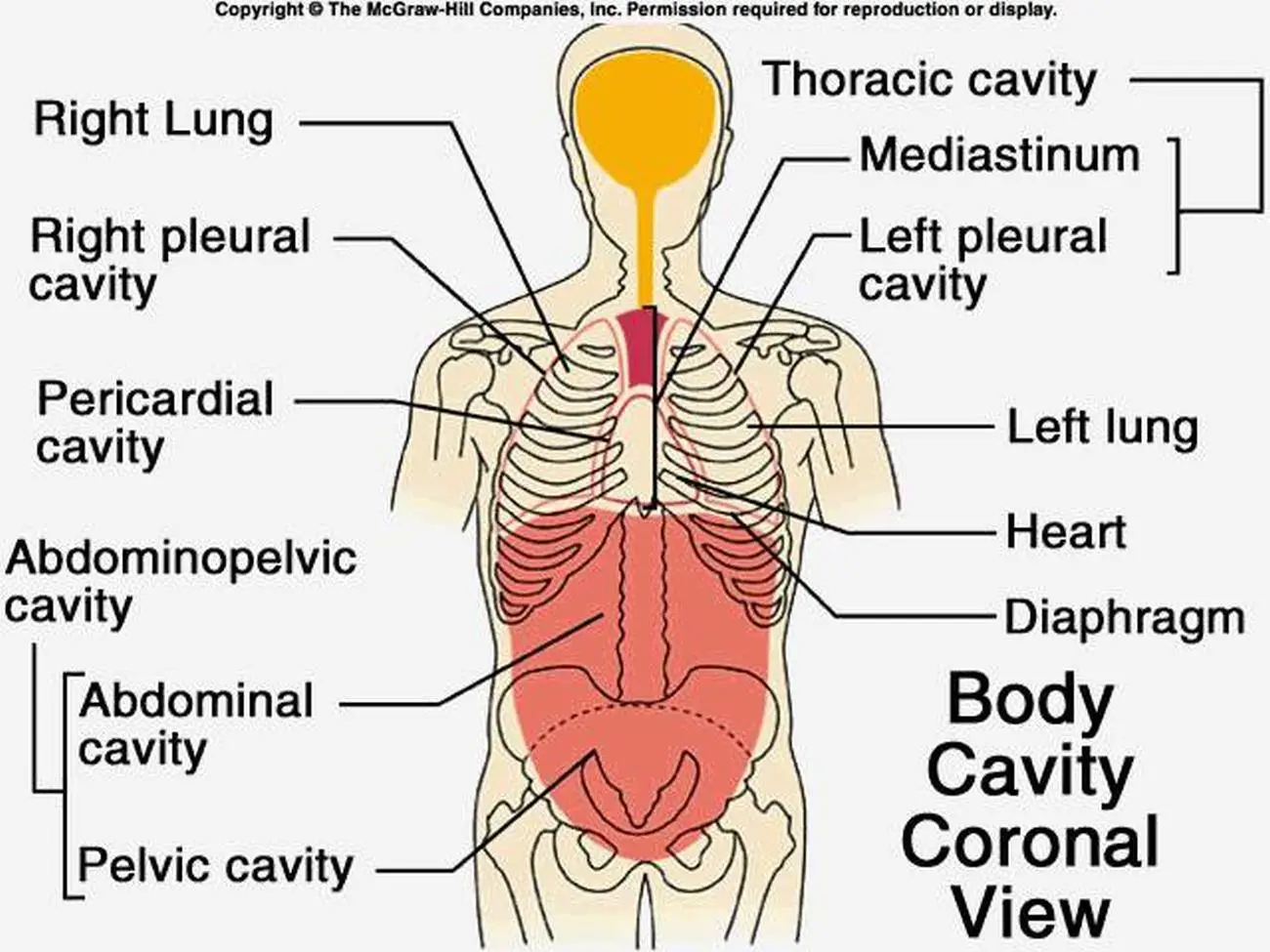
Pictures Of Cavity, Anatomical
The abdomen is the body region found between the thorax and the pelvis. Its superior aperture faces towards the thorax, enclosed by the diaphragm. Inferiorly the abdomen is open to the pelvis, communicating through the superior pelvic aperture (pelvic inlet). These two apertures, together with abdominal walls, bound the abdominal cavity.
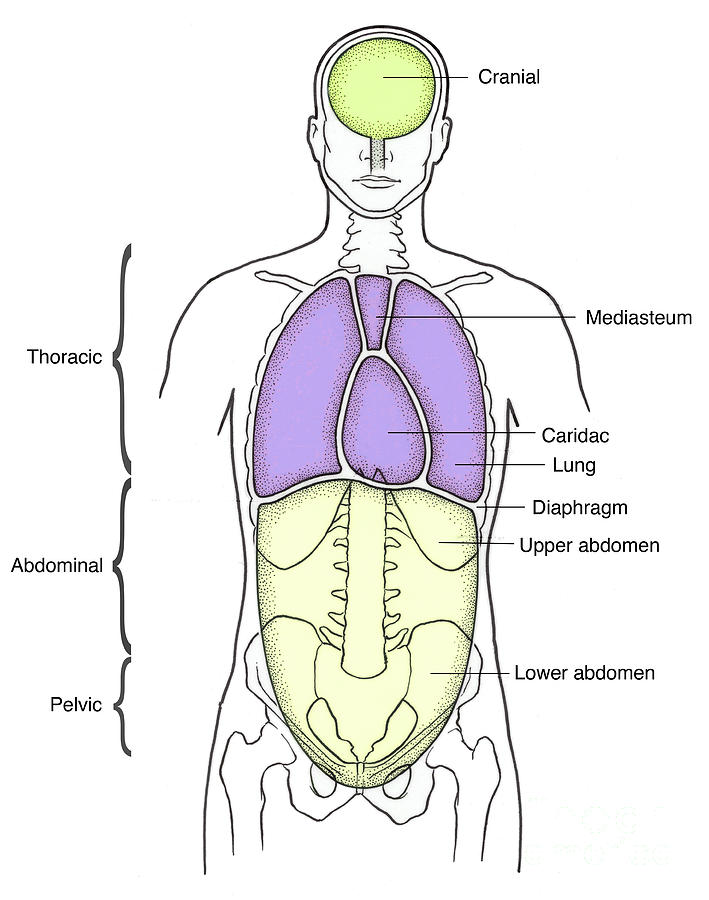
Illustration Of Anterior Body Cavities Photograph by Science Source
A. body cavity. is a fluid-filled space inside the body that holds and protects internal organs. Human body cavities are separated by membranes and other structures. The two largest human body cavities are the ventral cavity and dorsal cavity. These two body cavities are subdivided into smaller body cavities.
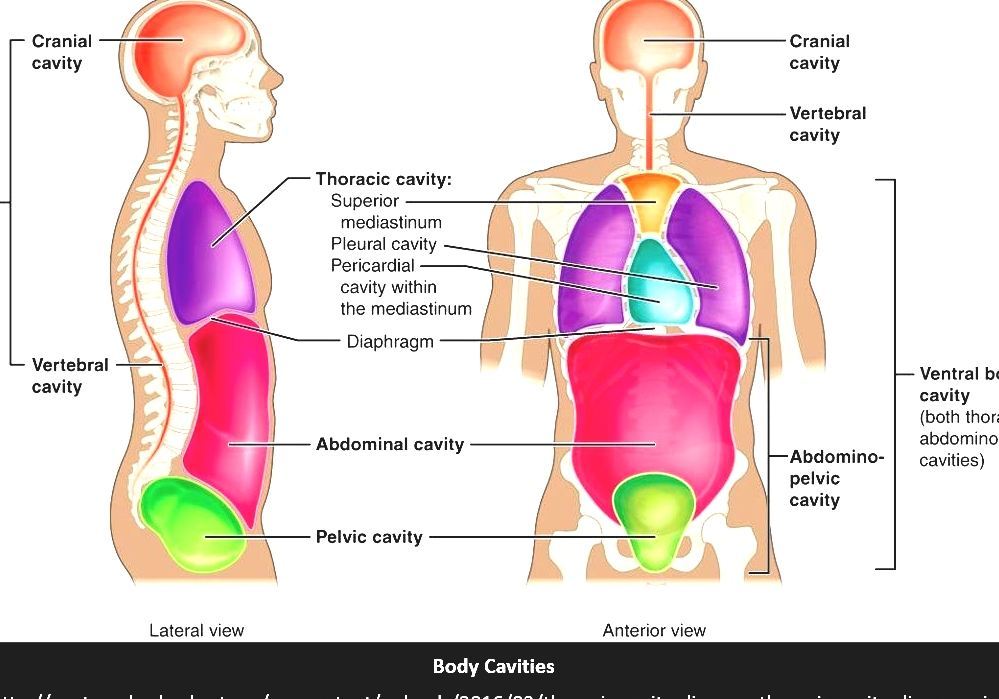
Body Cavity Cavities Of The Human Body
Abdominal Body Cavity: Labeled diagram of the abdominal cavity showing the small intestine (brown) covered by the visceral peritoneum (inner green layer), and the parietal peritoneum (outer red layer) lining the abdominal cavity. The peritoneal cavity is the potential space between the visceral and parietal peritoneum and contains peritoneal fluid.

Body Cavities Diagram Visual Diagram
Discover the body's cavities and organs found in the ventral cavity, where it is located, and see a ventral body cavity diagram. Updated: 11/21/2023 Table of Contents. What is the Ventral Cavity?.
Solved Chapter 1, Problem 03 A Visual Analogy Guide to Human Anatomy
Thoracic wall The first step in understanding thorax anatomy is to find out its boundaries. The thoracic, or chest wall, consists of a skeletal framework, fascia, muscles, and neurovasculature - all connected together to form a strong and protective yet flexible cage.. The thorax has two major openings: the superior thoracic aperture found superiorly and the inferior thoracic aperture.
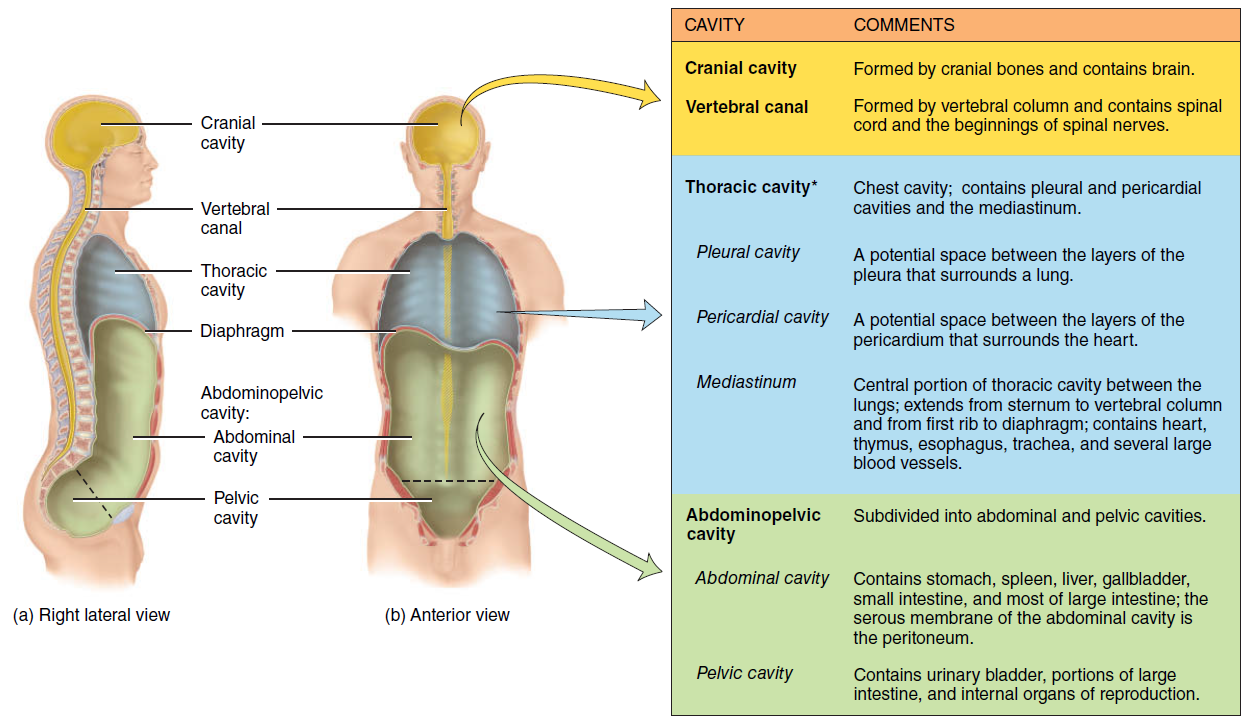
Organs In The Body Cavities Body Cavity And Their Organs Page 1 Line
The abdominal cavity is where the majority of the body's organs lie. These are sometimes referred to as the "viscera", and they include organs like the liver, stomach, spleen, pancreas, kidneys and others involved in digestion, metabolism, and filtering of the blood. A special membrane holds all of these organs in place and is called the.

Major Cavities Of The Body cloudshareinfo
The dorsal cavity is at the posterior, or back, of the body, including both the head and the back of the trunk. The dorsal cavity is subdivided into the cranial and spinal cavities. The cranial cavity fills most of the upper part of the skull and contains the brain. The spinal cavity is a very long, narrow cavity inside the vertebral column.
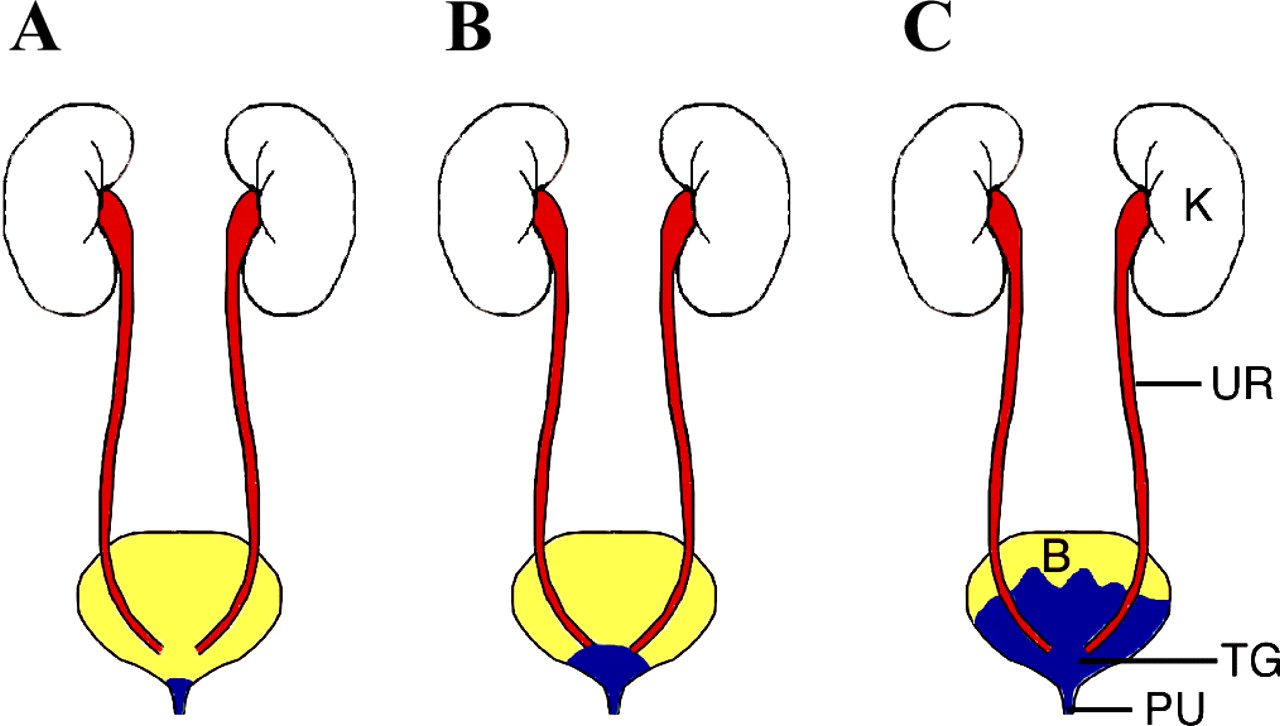
Body Cavity Diagram ClipArt Best
The main bones in the abdominal region are the ribs. The rib cage protects vital internal organs. There are 12 pairs of ribs and they attach to the spine. There are seven upper ribs, known as.